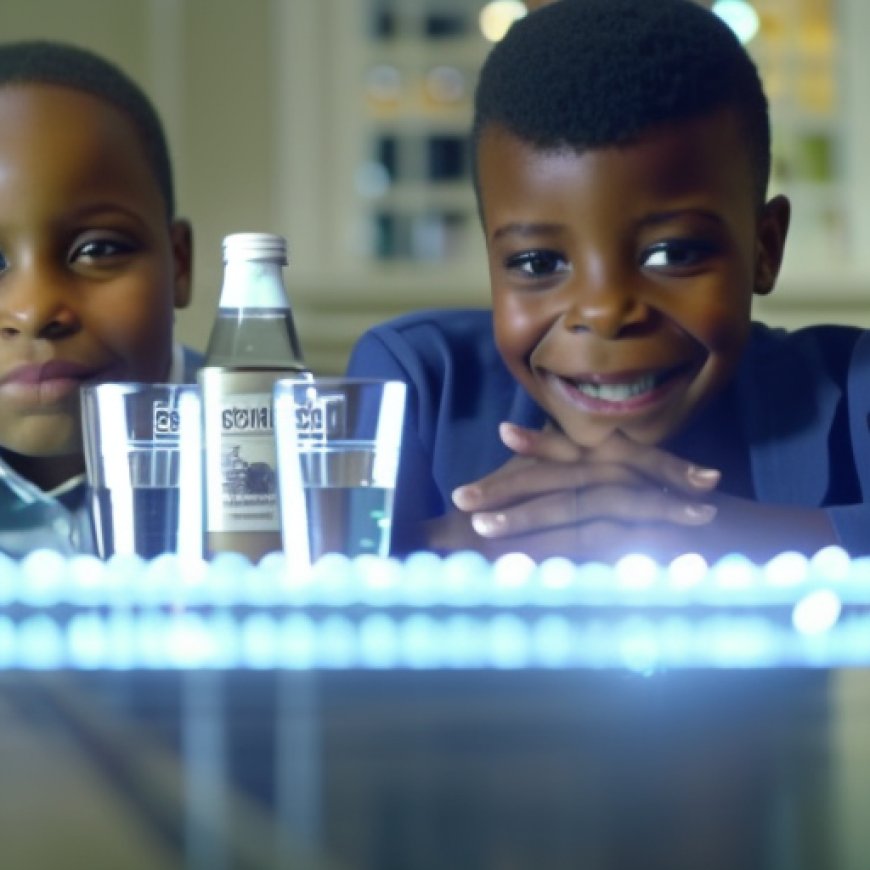EPA Announces Over $50 Million to Assist Small, Underserved, and Disadvantaged Communities in Accessing Clean and Safe Drinking Water | US EPA
EPA Announces Over $50 Million to Assist Small, Underserved, and ... U.S. EPA.gov


U.S. EPA Announces $50.4 Million in Funding for Clean and Safe Drinking Water
June 26, 2023
Contact Information
WASHINGTON — Today, the U.S. Environmental Protection Agency (EPA) announced $50.4 million in annual funding to states and territories for communities most in need of access to clean and safe drinking water. The funding will support projects and activities in underserved, small, and disadvantaged communities to access and invest in water infrastructure and comply with the Safe Drinking Water Act (SDWA).
“Across the country, too many communities struggle with accessing clean, safe water,” said EPA Assistant Administrator for Water Radhika Fox. “These grants will invest in solutions that upgrade infrastructure, improve water reliability, and deliver safe drinking water to our most vulnerable communities. This grant, along with other funding from President Biden’s Bipartisan Infrastructure Law, will strengthen our nation’s water infrastructure and ensure everyone has access to clean, safe water.”
Grant funding can support a broad range of approaches to help communities address drinking water concerns, from household water quality testing to monitoring for unregulated drinking water contaminants. Funds may also support efforts to build the technical, financial, and managerial abilities of a water system’s operations and staff. Infrastructure projects—from transmission, distribution, and storage—that support drinking water quality improvements are also eligible for grant funding.
The Small, Underserved, and Disadvantaged Community grant program, established under the Water Infrastructure Improvements for the Nation (WIIN) Act, awards funding to states and territories on a non-competitive basis. EPA awards funding to states based on an allocation formula that includes factors for population below the poverty level, small water systems, and underserved communities. There is a 10% Tribal allotment. For more information, visit the WIIN SUDC Grant website.
FY23 WIIN Funding for Small, Underserved and Disadvantaged Community Grant
- State/Territory
- Available Funding
- Alaska
- $1,157,000
- Alabama
- $739,000
- Arkansas
- $724,000
- American Samoa
- $279,000
- Arizona
- $1,021,000
- California
- $3,304,000
- Colorado
- $942,000
- Connecticut
- $562,000
- District of Columbia
- $303,000
- Delaware
- $396,000
- Florida
- $1,966,000
- Georgia
- $1,338,000
- Guam
- $262,000
- Hawaii
- $341,000
- Iowa
- $711,000
- Idaho
- $642,000
- Illinois
- $1,417,000
- Indiana
- $854,000
- Kansas
- $780,000
- Kentucky
- $703,000
- Louisiana
- $1,303,000
- Massachusetts
- $695,000
- Maryland
- $621,000
- Maine
- $476,000
- Michigan
- $1,294,000
- Minnesota
- $761,000
- Missouri
- $1,059,000
- Northern Mariana
- $277,000
- Mississippi
- $818,000
- Montana
- $642,000
- North Carolina
- $1,401,000
- North Dakota
- $430,000
- Nebraska
- $581,000
- New Hampshire
- $534,000
- New Jersey
- $798,000
- New Mexico
SDGs, Targets, and Indicators Analysis
1. Which SDGs are addressed or connected to the issues highlighted in the article?
- SDG 6: Clean Water and Sanitation
The article discusses the funding provided by the U.S. Environmental Protection Agency (EPA) to states and territories for communities in need of access to clean and safe drinking water. This directly relates to SDG 6, which aims to ensure availability and sustainable management of water and sanitation for all.
2. What specific targets under those SDGs can be identified based on the article’s content?
- Target 6.1: By 2030, achieve universal and equitable access to safe and affordable drinking water for all.
- Target 6.3: By 2030, improve water quality by reducing pollution, eliminating dumping and minimizing release of hazardous chemicals and materials, halving the proportion of untreated wastewater, and increasing recycling and safe reuse globally.
The article mentions that the funding will support projects and activities in underserved, small, and disadvantaged communities to access and invest in water infrastructure and comply with the Safe Drinking Water Act (SDWA). This aligns with Target 6.1, which focuses on achieving universal access to safe drinking water. Additionally, the mention of improving water reliability and delivering safe drinking water to vulnerable communities relates to Target 6.3, which aims to improve water quality and reduce pollution.
3. Are there any indicators mentioned or implied in the article that can be used to measure progress towards the identified targets?
- Indicator 6.1.1: Proportion of population using safely managed drinking water services.
- Indicator 6.3.2: Proportion of bodies of water with good ambient water quality.
The article does not explicitly mention these indicators, but the funding provided by the EPA to improve access to clean and safe drinking water can contribute to measuring progress towards Indicator 6.1.1, which focuses on the proportion of the population using safely managed drinking water services. Additionally, the efforts to upgrade infrastructure and improve water reliability can contribute to measuring progress towards Indicator 6.3.2, which looks at the proportion of bodies of water with good ambient water quality.
SDGs, Targets, and Indicators Table
SDGs Targets Indicators SDG 6: Clean Water and Sanitation Target 6.1: By 2030, achieve universal and equitable access to safe and affordable drinking water for all.
Target 6.3: By 2030, improve water quality by reducing pollution, eliminating dumping and minimizing release of hazardous chemicals and materials, halving the proportion of untreated wastewater, and increasing recycling and safe reuse globally.Indicator 6.1.1: Proportion of population using safely managed drinking water services.
Indicator 6.3.2: Proportion of bodies of water with good ambient water quality.Behold! This splendid article springs forth from the wellspring of knowledge, shaped by a wondrous proprietary AI technology that delved into a vast ocean of data, illuminating the path towards the Sustainable Development Goals. Remember that all rights are reserved by SDG Investors LLC, empowering us to champion progress together.
Source: epa.gov

Join us, as fellow seekers of change, on a transformative journey at https://sdgtalks.ai/welcome, where you can become a member and actively contribute to shaping a brighter future.







